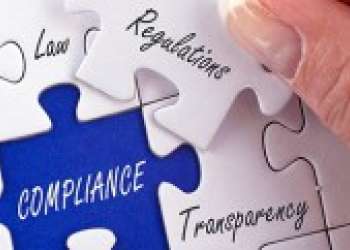Keep records and record your keeping - OHS Act requirements
It is commonly accepted that a great majority of accidents can easily be prevented. As a rule of thumb it can be stated that 88% of the accidents are self-inflicted by employees or employers neglecting the basic rules and regulations laid down, while 10% of the accidents are caused by unsafe ‘conditions’. This includes conditions that exist as a result of neglect and/or ignorance as well as general unsafe conditions of equipment used. Only 2% of the accidents can be attributed to an act of god, meaning that the accident/incident could not have been prevented or in some cases, foreseen.
With this kept in mind, Inspectors from the Department of Labour often don’t have to look too far to get to the bottom of the causes of the incident. Knowing that everything needs to be recorded, they will simply request all relevant documentation available in the organisation to come to their conclusion.
This includes, but is not limited to:
- The company’s OHS policy
- Service Level Agreements
- Maintenance reports
- Previous risk assessments
- Incident reports
- Inspection reports
- Attendance sheets
- Meetings of the OHS committee
By studying these documents, the inspector will be able to establish an understanding of the process that lead to the accident. They will look for clues that give away a history of neglect or ignorance. They will also look for clues that will indicate the perception and behaviour in the workplace with regards to health and safety as well as policies that were (not) in place. Upon request by the inspector, companies have no other option than handing over all requested documents.
Section 39.3 of the South African Occupational Health and Safety Act (Act 85 of 1993) clearly states that ‘any statement or entry contained in any book or document kept by any employer or user or by his employee or mandatary, or found on or in any premises occupied or used by that employer or user, and any copy or reproduction of any such statement or entry, shall be admissible in evidence against him as an admission of the facts’. Only when it can be proven that the statement or entry was not made by the employer or user, or when it can be proven that the person who made the entry had no authority doing so, the entry will be considered as void. In all other cases, any information (or the absence of) will be considered when determine the cause of an accident. Section 39.5b of the said Act state that ‘at any trial any document purporting to be a certificate or statement by an approved inspection authority and in which it is alleged that the article substance, plant, machinery or health and safety equipment forming the subject of the charge complies with the requirements prescribed in respect thereof, shall be accepted as prima facie proof of the facts stated’.
Trying the fool the inspector is considered a serious offence, as is stipulated in section 39.4 of the Act. ‘Persons caught providing untrue statements or entries will be considered as having wilfully falsified the record’. When Health and Safety officials of MAKROSAFE inspect their sites, they also will request the same type of documentation. To them it is the framework from which it can be determined what needs to be done to have accidents prevented in the first place. Have your premises and processes inspected by MAKROSAFE regularly. It is the safest way to prevent an accident from happening and to be prepared for any (unannounced) site-visit by inspectors from the Department of Labour.
Read more


Leave a comment